Smeaton's Tower
Smeaton’s Tower arguably the most famous Landmark in Plymouth, now sits proudly on top of Plymouth Hoe. With its’ candy stripe red and white painted exterior, it can’t fail to make you smile. It was designed and built by celebrated engineer John Smeaton and was once a working lighthouse situated 13 miles out to sea on the treacherous Eddystone Rock, where it happily sat warning all shipping of the imminent danger from 1759 to 1877. It was actually the 3rd Eddystone lighthouse and was most notable for its’ curved structure which was a massive step forward in lighthouse design. Smeaton modelled the lighthouse on an oak tree and used dovetail joints and marble dowels, along with a form of cement called hydraulic lime, which could set under water! In a feat of Victorian engineering the lighthouse was deconstructed, due to the fact that the ledge on which it sat had begun to erode, and it was brought back to Plymouth Hoe.
Did you know it is only the top two thirds of the lighthouse that sits on the Hoe? On a clear day you can even see its’ original base on the rock next to the fourth Eddystone lighthouse. You can actually climb the 93 step spiral staircase and wonder at the magnificent and far reaching views of the City, Plymouth Sound, Dartmoor and Cornwall.
Royal Citadel
The Royal Citadel was built in the late 1660’s, under the instruction of King Charles 11. An imposing and dramatic structure, it is situated on the East side of Plymouth Hoe. The Citadel was built from local limestone and granite, except for the front entrance portico which is built of Portland Stone, and designed by Sir Thomas Fitz. It offers breath taking views of both Plymouth City, Plymouth Sound and beyond. It is located on the site of the earlier fort that had been built in the time of Sir Francis Drake, known as Drakes Fort.
The Royal Citadel began life defending the coastline against Dutch invasion but has seen many challenges and changes over the years. It has been greatly extended and strengthened over the years especially in the 18th and 19th centuries during the many French Wars that afflicted that period. Still in use as a working military base today, they offer historic guided walking tours running throughout the summer months. Experienced local blue badge guides offer a fascinating insight into its history, it's hoped that these can resume again soon!
Mayflower Museum and Tourist Information Centre
The building that houses The Mayflower Museum and Visitor Centre was built on the millennium, making it 20 years old this year. It is built from Italian stone and sits on Plymouths’ Historic Barbican. Definitely worth visiting to find out some fascinating facts about The Mayflower, its passengers and their Atlantic voyage back in 1620. Did you know that it is located on the exact same site as The Brunswick Hotel which existed from at least 1825? The name was changed to The Mayflower Hotel, in 1925, allegedly to lose any German connection with the name. The Mayflower Hotel was completely destroyed in a night time air raid on Plymouth in WW11 on Friday 21st March 1941. The balcony on the 3rd floor has a picturesque and unique view of Plymouth overlooking the stunning Sutton Harbour and Mayflower Steps Memorial, then on to the East of the City, the South Hams and Dartmoor.
Elizabethan House
The Elizabethan House on the Barbican’s New Street is a typical example of a Merchants house from the early 17th century. It is a narrow, timber frame 3 storey building with mullioned windows and a projecting front gable. It was originally built sometime after 1584 when the Lord Mayor, John Sparke gave permission for a ‘new street’ to be built on the Barbican. Previously called Ragg Street due to its connections to the cloth trade. Home for many years to merchants and businessmen, unfortunately, by the Victorian era it became a house of multiple occupancies and would have been extremely overcrowded.
In 1926 the house was sold under a compulsory purchase order for slum clearance and was tendered for demolition. Fortunately, after a 4 year campaign involving Nancy Astor and the Old Plymouth Society, it was saved and re-opened as a museum in 1930. It is now closed and undergoing major refurbishments with a view to re-opening as a museum in 2021. Did you know that New Street is actually the oldest street in Plymouth?
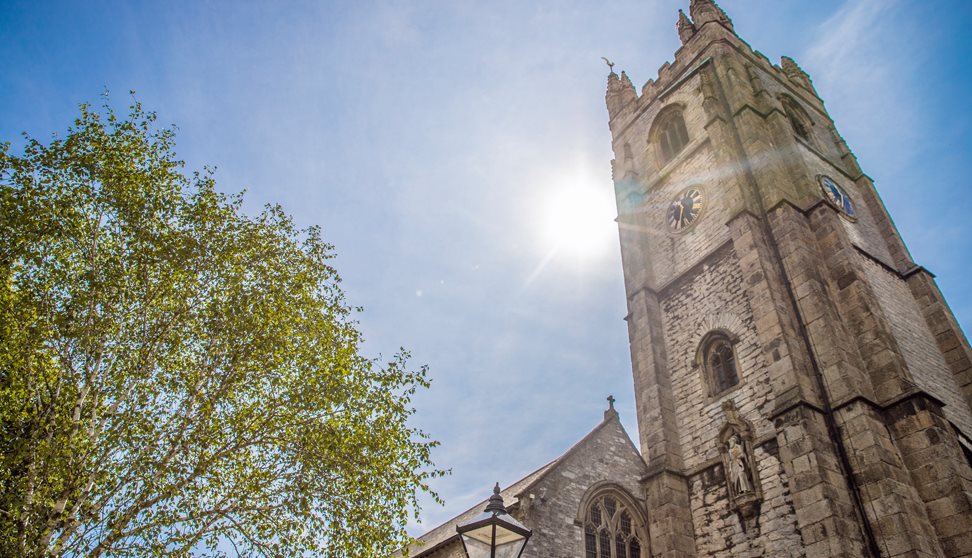
St Andrews Church
St Andrews Church on Royal Parade has its’ origins as far back as the 8th century when it would have served the parish of Sutton (later to become Plymouth). In the 12th century a stone church was built on the site. The original cruciform structure was gradually extended over the years, with the addition of chapels, aisles and transepts, and the Tower was completed in 1490. There have been several other alterations to the Church over the years but the most notable in recent history must be the bombing in WW2 when much of the building was bombed and burnt out, leaving it just a roofless shell. Rebuilding began in 1949 and in 1957 it was re-consecrated.
In 2009 it was awarded the status of Minster in recognition of the historic role played as a place of worship for the city. Did you know that after the WW2 Blitz, flowerbeds and lawns were planted where once there was rubble and the residents of Plymouth continued to worship for six years in the open air ‘Garden Church’ as it became known?
National Marine Aquarium
The National Marine Aquarium is a landmark building in Plymouth, situated in the historic and picturesque Sutton Harbour area. It is a complex, modern building consisting of huge swathes of curved glass and wood panelling on its exterior with a curved white roof, reminiscent of a wave. The design was commissioned in 1995 and was built over 3 phases, the first phase opened in 1998 and in 2018 it celebrated its 20th birthday. This striking building is home to the UK’s largest aquarium and is run by registered charity the Ocean Conservation Trust. Did you know that it boasts the largest and deepest Atlantic Tank in the country, at a whopping 2.5 million litres?
Plymouth Guildhall
The Guildhall, situated in Guildhall Square, was built between 1870 and 1874 and designed by Norman and Hine of Plymouth. It is designed in the Gothic Revival style with artistic direction from Edward William Godwin, and is now a Grade 2 Listed Building. It was built using mainly Granite and Plymouth Limestone. Unfortunately, like many of Plymouths’ buildings it was heavily bombed and reduced to a shell in the Second World War Blitz.
Did you know that it was only saved from demolition by just one single council vote in 1951, mainly because of its impressive landmark Tower? It was then rebuilt as part of the Paton Watson and Patrick Abercrombie plan for Plymouth after the Second World War. It is now a multi-purpose venue in the city and used for a whole range of events.
Royal Albert Bridge
The Royal Albert Bridge was designed and built by one of the most prolific British Engineers of the 19th Century, Isambard Kingdom Brunel. It is a railway bridge, spanning the River Tamar between Plymouth in Devon and Saltash in Cornwall, and is 667m long and 34 metres high. Construction began in 1854 and the completed bridge was opened by Prince Albert in 1859, after just 5 years and despite the complexity of the engineering project. The unique and innovative design consists of two ‘lenticular’ iron trusses of 139 metres in length with traditional plate girders. This was adapted by Brunel from designs by another famous 19th century engineer, Robert Stephenson. Brunel was responsible for the design of many bridges including the Clifton Suspension Bridge in Bristol.
Did you know that the words "I.K. BRUNEL ENGINEER 1859" were fixed to either end of the Royal Albert Bridge to commemorate his death in 1859, the year the bridge opened?
Royal William Yard
The Royal William Yard was constructed between 1825 and 1831 by renowned architect Sir John Rennie. One of the major architectural attractions in the city, it was originally built as a Victualling Yard for the Royal Navy and is now a scheduled ancient monument. It is considered to be one of the most significant groups of military buildings in Britain and is the largest collection of Grade 1 Listed Buildings in Europe. The site covers approximately 16 acres and was built and named after King William IV and it is his statue that stands over the grand entrance. It was closed in 1992 and then sold on to a private buyer where it underwent a careful plan of conservation and repair of the buildings. Built using Plymouth Limestone and Dartmoor Granite it is an impressive site, situated in Stonehouse on the outskirts of the City of Plymouth.
The buildings still maintain their original names, even today such as The Slaughterhouse, Mills Bakery, Melville and The Brewhouse. It is now a mixed use development of apartments, offices and leisure. Did you know that architect Sir John Rennie had also been involved with the construction of London Bridge?
The Belvedere
The Belvedere on Plymouth Hoe was built in 1891. It is a classically designed, 3 storey, open terraced building or summer house. Due to its white painted exterior and three tiers, it is known locally as The Wedding Cake or Queen Victoria’s Wedding Cake! The structure re-used old 17th century Tuscan granite columns from the old Plymouth Market. It commands picturesque sea views of Drake’s Island and Plymouth Sound. In 1891, if you sat in The Belvedere you would also have had a view of Plymouth’s Promenade Pier, which was opened in 1884 and in use until it was bombed in the Second World War in March 1941 and finally demolished in 1953.
There is a small memorial garden at the front of The Belvedere, where civic ceremonies are sometimes held. Did you know that this garden is actually situated on the old Bull Ring, where bull baiting continued until it was thankfully outlawed in 1835?
Comments
James During this phase of the mobile app development process https://arounda.agency/blog/a-step-by-step-guide-on-mobile-app-development-process , the development team works in conjunction with the testing team. The testing team uses various tools to test the application's performance, functionality, and speed. They check for bugs, and if necessary, submit the application for approval in the App Store. A robust backend is essential for scalability, as well as for a seamless user experience. A good backend will allow the app to grow and change over time. It should be ready for unauthorized attempts to break in and for inappropriate behavior. Gary Bens Great article, thanks! You described some really great historical places, I really hope to visit them all. We recently went on a college excursion to your museum and we really enjoyed it. By the way, I can recommend the https://essays.edubirdie.com/history-essay-writer website for those who have problems studying history. While I was having a hard time with essays on various topics in historical subjects, I used the services of this service and received excellent grades for my papers!


 to add an item to your Itinerary basket.
to add an item to your Itinerary basket.



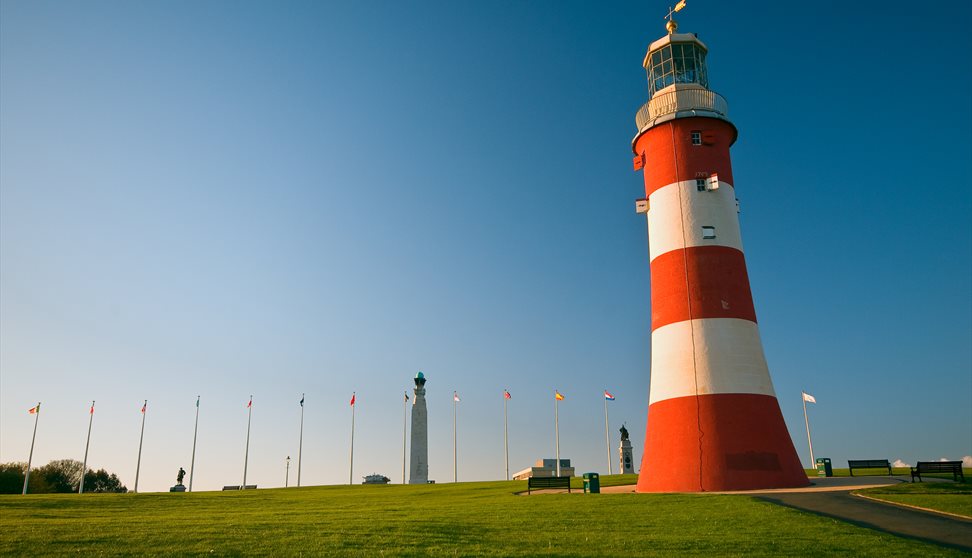
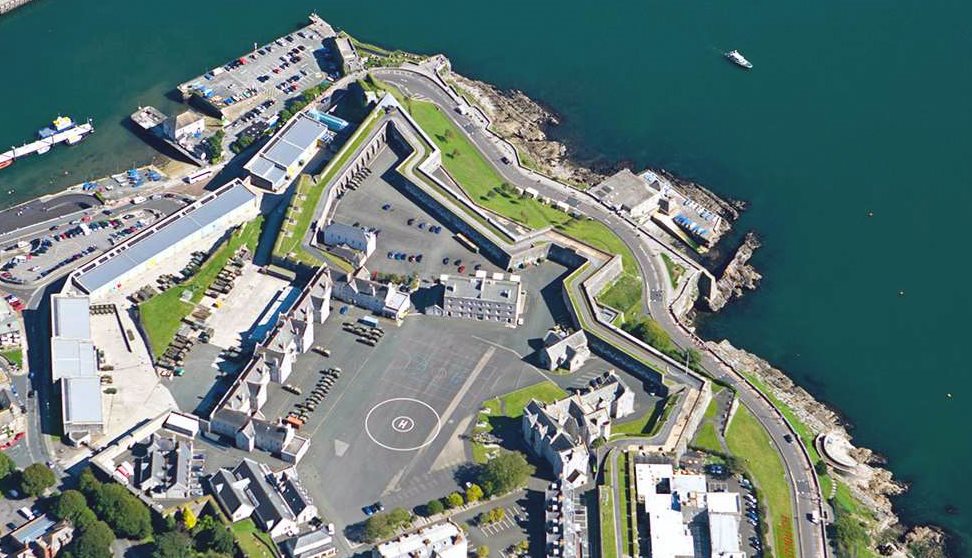
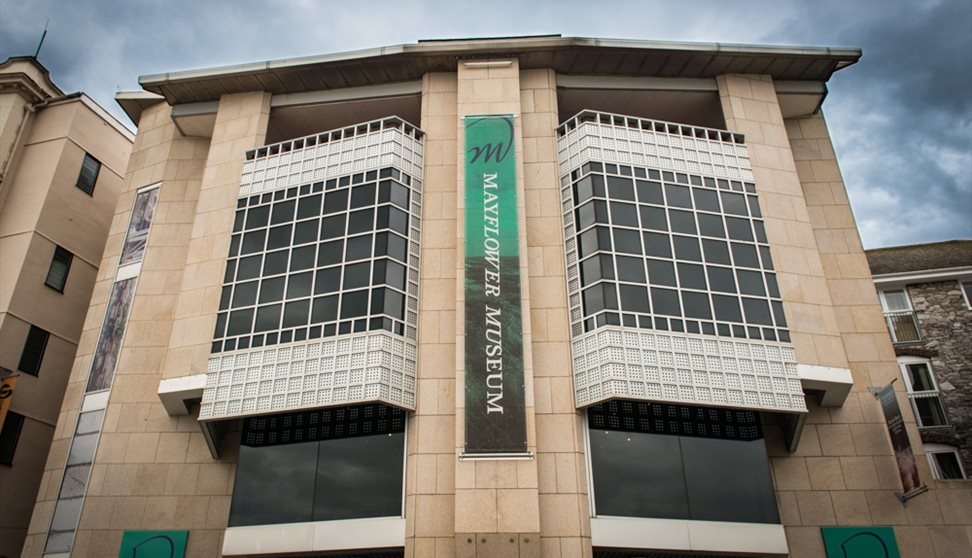
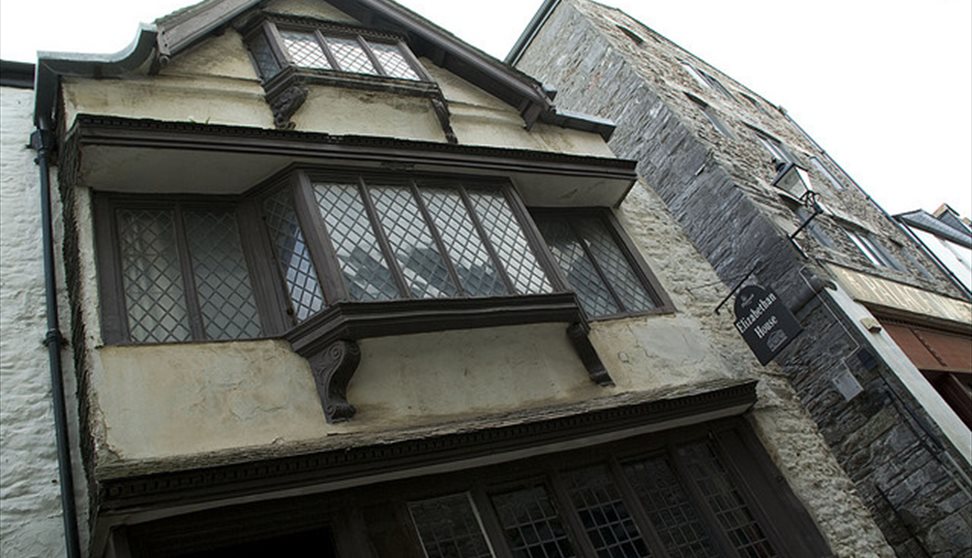
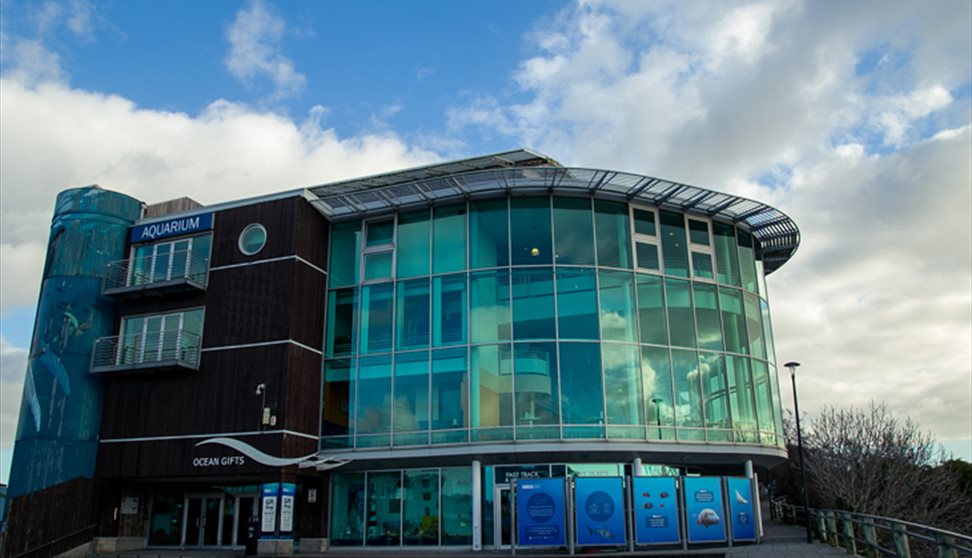
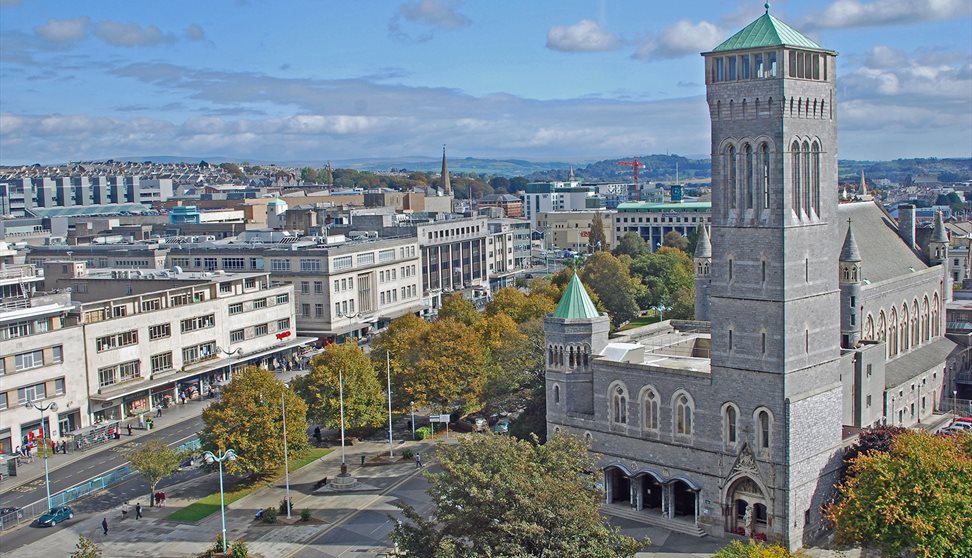


.jpg)



